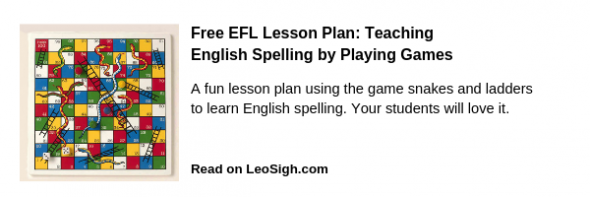Teaching beginner students early on about ‘House, Room and Furniture’ vocabulary is important, if students are to learn to communicate in English. Not every EFL/ESL teacher thinks about ‘House, Room and Furniture’ vocabulary being important so soon, but it is.
After all, think about it. Just to have a basic conversation an EFL/ESL student wants to be able to say his family live in a townhouse, his book is on the table and, by the way, where is the bathroom?
That’s why I created a fun, and easy, lesson plan for beginner or low-intermediate level EFL/ESL students who don’t always know all the ‘House, Room and Furniture’ vocabulary that they should.
Level: Beginner to Low-Intermediate
Time Needed: One 1-Hour Class
Expected Outcome – Students will be able to ask questions using new ‘House, Room or Furniture’ vocabulary. They will also be able to write down, and spell correctly, the vocabulary they already know.
Materials and Resources – Whiteboard markers, whiteboard, vocabulary sheet, flashcards, several plastic jars or containers, a bucket of colored water and some paper water cones.

Teaching Procedures:
Step One: Hand out the vocabulary sheet you’ve prepared in advance. I usually put 10 new words under each category ie: 10 things under ‘House’ (bungalow, apartment, condo, two-bedroom house, white house etc), 10 things under ‘Room’ (kitchen, bathroom, bedroom, guest bedroom, study, etc) and 10 under ‘Furniture’ (table, chair, TV – the possibilities are endless).
I always pick a couple of things in each category I know my students already know, then add eight new ones.
Also, make sure all these words are written on the whiteboard as well (they will be used for Game 2 later).
Step Two: Go over all the vocabulary, asking students to repeat after you every word on the sheet. Do this three times. Now, ask your students to turn over their sheets so they cannot see the vocabulary and hold up a flashcard with a picture of some of the new things on it. Choose students around the class to tell you what the item on the flashcard is.
Step Three (Game 1): Put students into teams. Depending on class size, 2-3 teams is ideal, but if you have a huge class you’ll have to have a couple more.
Explain to your students they will be playing a game. Tell them, when the game starts, you will hand a piece of paper to one team. Every other team is allowed to ask three questions about the word on the paper. “Is it chair?” Is it “kitchen?”, “Is it bungalow?” etc. The team that guesses the word correctly is the winner of that round.
As the winner…..a representative from that team must come to the front of the class and pick up a paper cone. He/she must dip the paper cone into the bucket of water you have sitting at the front and pour the water carefully into a jar that has been assigned to his team.

If no team guesses the word correctly, then the team holding the piece of vocabulary paper is allowed to get up and pour a cone of water into their jar. (By the way, I add some food coloring to the water, to make it easier to see as the level rises, and to make it a bit more fun).
This game continues until one team gets their water level to a pre-marked point on the plastic jar. That team is the winner.
Step Four (Game 2): Now, using the vocabulary you already have written on the White Board, erase enough words that there are only 15 words left (decide beforehand which words and write them down as you will need to know the remaining words to check them when the game ends).
Give your students, still in their teams, one minute to memorize which words are still on the board. After 1 minute, erase all the words then tell students, as a team, they will have 30 seconds to write down as many of the words they can remember. (This is more difficult than it sounds as, remember, students have been using the same group of words all class, so sometimes think a word was still on the board when in actuality you’d erased it).
The team that writes down the most correct words, with correct spellings, is the winning team.
Conclusion: If you still have time in the class before the period ends, quickly go over the vocabulary one more time, asking your students to repeat it. Then inform them there will be a spelling test on the vocabulary in the next class.
Evaluation/Assessment: 1. students’ understanding of vocabulary, 2. participation in classroom activities 3. behavior and attention in class, 4. ability to be able to still remember the correct pronunciation at the conclusion of the class and in future classes. 5. spelling test results.
More lesson plans for EFL students:
Free EFL/ESL lesson plan on prepositions for Thai students
Free EFL/ESL lesson plan on transportation and travel vocabulary for beginners

